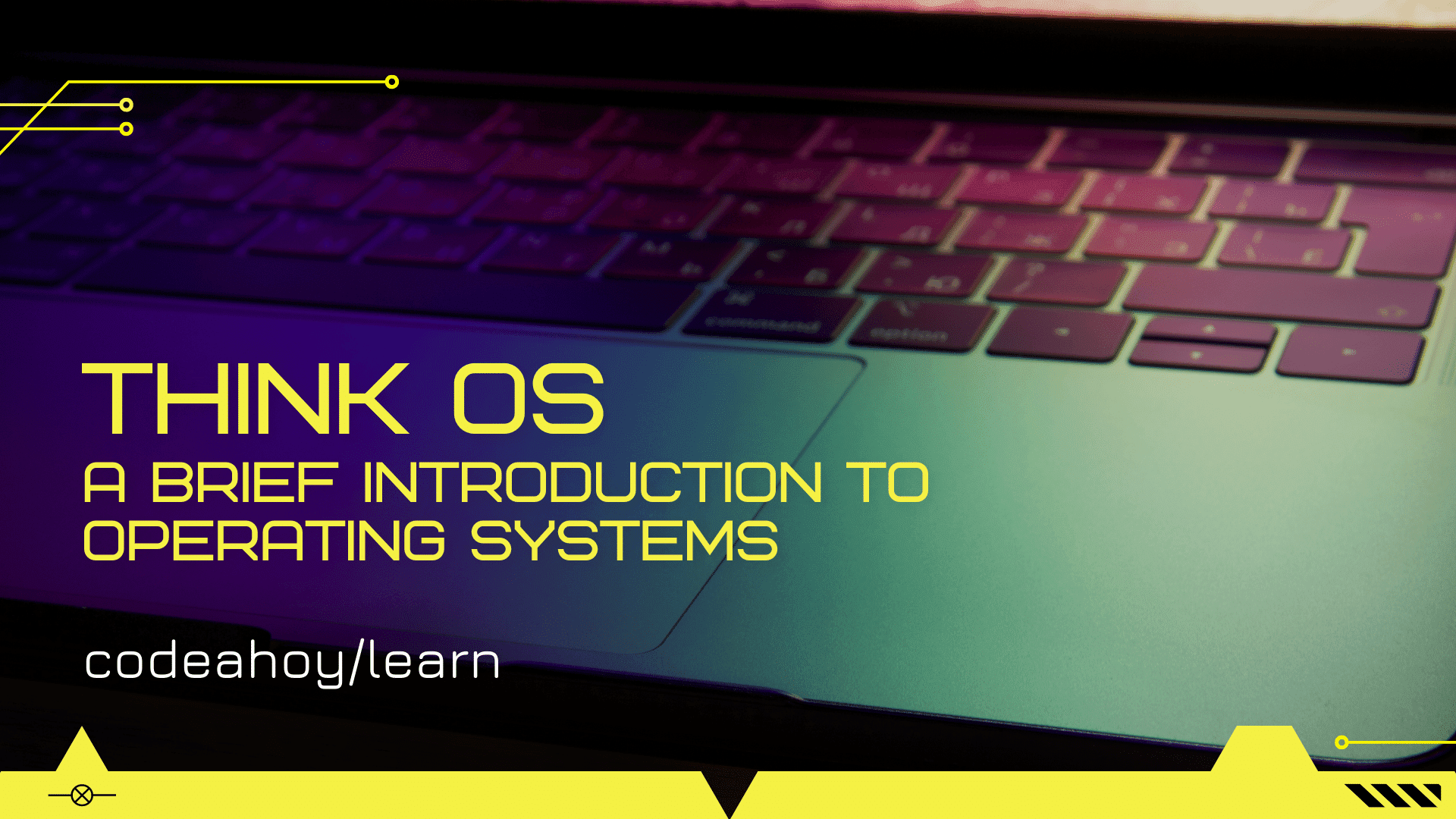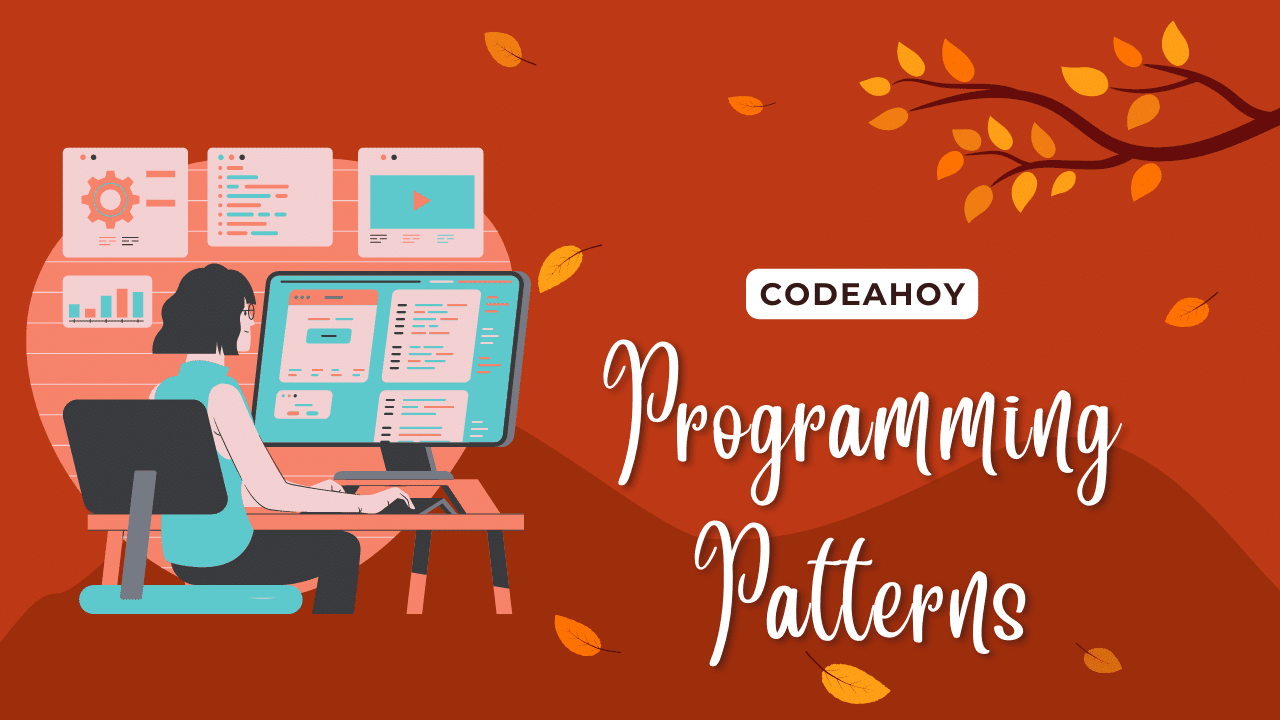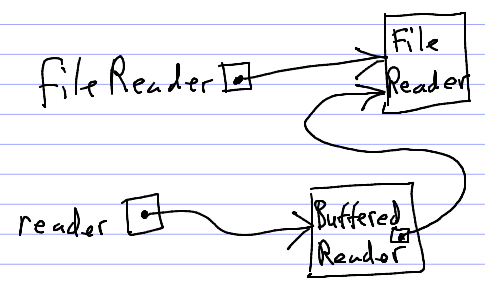Books / Fundamentals of Computer Science / Chapter 5
File I/O in Java
File I/O allows a Java program to read information from files and save information to files.
There are two general kinds of file I/O: byte I/O and character I/O.
Byte I/O is useful for reading from and writing to binary files.
Character I/O is useful for reading from and writing to text files.
The InputStream and OutputStream classes are used to read and write bytes to and from files (and other sources/destinations for binary data).
The Reader and Writer classes are very much like InputStream and OutputStream, but they are used to read and write characters rather than bytes.
All 4 of the basic Input/OutputStream and Reader/Writer classes come in many different “flavors”. For example:
- FileInputStream is an InputStream that reads bytes from a file
- FileWriter is a Writer that writes characters to a file
Making the situation even more complicated, some kinds of Stream and Reader/Writer classes are used as “adapters” or “wrappers” to add functionality to another Stream or Reader/Writer object. For example:
- A BufferedReader object can be used as an adapter to make any Reader object capable of reading complete lines of text at a time.
- A Scanner object can be used as an adapter to make any InputStream or Reader object capable of reading tokens of input
One of the keys to writing code to do file I/O in Java is knowing which classes, or combinations of classes, you need to use.
Reading characters from a file
Here’s a program to read every character of text from a FileReader, and count the number of occurrences of the vowels A, E, I, O, and U.
package edu.ycp.cs201.countvowels;
import java.io.FileReader;
import java.io.IOException;
import java.util.Scanner;
public class CountVowels {
public static void main(String[] args) throws IOException {
Scanner keyboard = new Scanner(System.in);
String fileName;
System.out.println("Which file? ");
fileName = keyboard.next();
FileReader reader = new FileReader(fileName);
int vowelCount = 0;
while (true){
int c = reader.read();
if (c < 0) {
break;
}
char ch = (char) c;
ch = Character.toLowerCase(ch);
if (ch == 'a' || ch == 'e' || ch == 'i' || ch == 'o' || ch == 'u') {
vowelCount++;
}
}
reader.close();
System.out.println("The file contains " + vowelCount + " vowel(s)");
}
}Note that when the read method returns a negative value, it means that the reader has reached the end of the input file, and there are no more text characters to be read.
Also note that after the program is done using a Stream or a Reader/Writer, it is important to call the close method on the object.
Assume that the file myFile.txt contains the following text:
Fourscore and seven years ago...
Running the CountVowels program on that file produces the following output:
Which file? myFile.txt The file contains 11 vowel(s)
Reading all lines of text from a file
The BufferedReader class is handy for reading a text file line-by-line.
Here is a program to find the longest line in an input text file:
package edu.ycp.cs201.countvowels;
import java.io.BufferedReader;
import java.io.FileReader;
import java.io.IOException;
import java.util.Scanner;
public class FindLongestLine {
public static void main(String[] args) throws IOException {
Scanner keyboard = new Scanner(System.in);
System.out.println("Which file?");
String fileName = keyboard.next();
FileReader fileReader = new FileReader(fileName);
BufferedReader reader = new BufferedReader(fileReader);
int longest = 0;
while (true) {
String line = reader.readLine();
if (line == null) {
break;
}
if (line.length() > longest) {
longest = line.length();
}
}
reader.close();
System.out.println("The longest line contained " + longest + " character(s)");
}
}Note several interesting things going on in this program.
The BufferedReader object serves as an “adapter” or “wrapper” for the FileReader. That means that the BufferedReader object uses the FileReader object for reading characters, but adds some additional capabilities (specifically, the ability to read complete lines of text.) Here’s a picture showing how this works:
The BufferedReader object contains a reference to the underlying FileReader object in one of its (private) fields.
Also note that the BufferedReader’s readLine method returns the special null reference after all of the lines of text in the file have been read.
Finally, note that calling the close method on the BufferedReader causes the underlying FileReader to be closed. In general, when your program uses an adapter for a closeable resource such as a reader or writer, the program should call close on the adapter.
Always close the adapter.
Running the program on the same text file as the previous example:
Which file? myFile.txt The longest line contained 32 character(s)
Writing to a text file
The FileWriter class is useful for writing text to a text file.
Demo program:
package edu.ycp.cs201.countvowels;
import java.io.FileWriter;
import java.io.IOException;
public class WriteToFile {
public static void main(String[] args) throws IOException {
FileWriter writer = new FileWriter("pandp.txt");
writer.write("It is a truth universally acknowledged, that a single man in\n");
writer.write("possession of a good fortune, must be in want of a wife.\n");
writer.close();
System.out.println("File written successfully!");
}
}Note that when calling the write to write a string of text, you must manually insert newlines (\n) whenever you want to end a line and begin a new line.
This program writes the first sentence of Pride and Prejudice to a file called pandp.txt. Running the program produces the following output:
File written successfully!
After you run the program, right-click on the name of the project and choose Refresh. You will see a text file called pandp.txt appear in the project. When you open the file, you should see the two files written.
Summary
- InputStreams and OutputStreams are used for binary I/O: input and output with raw bytes of data. A byte is an 8-bit integer. All data is represented as a sequence of bytes.
- Readers and Writers are used for text I/O: input and output using text characters. Text I/O is generally more useful than binary I/O, because information stored as text is meaningful not only to computers but also to people.
- InputStreams, OutputStreams, Readers, and Writers come in different “varieties”. For example, a FileReader is a variety of Reader useful for reading text from a file.
- A BufferedReader object can adapt another Reader object to enable it to read complete lines of text using the readLine method.
- InputStreams, OutputStreams, Readers, and Writers should be closed when the program is done using them. This is done by calling the close method. A program that fails to close a stream, reader, or writer has a resource leak.






